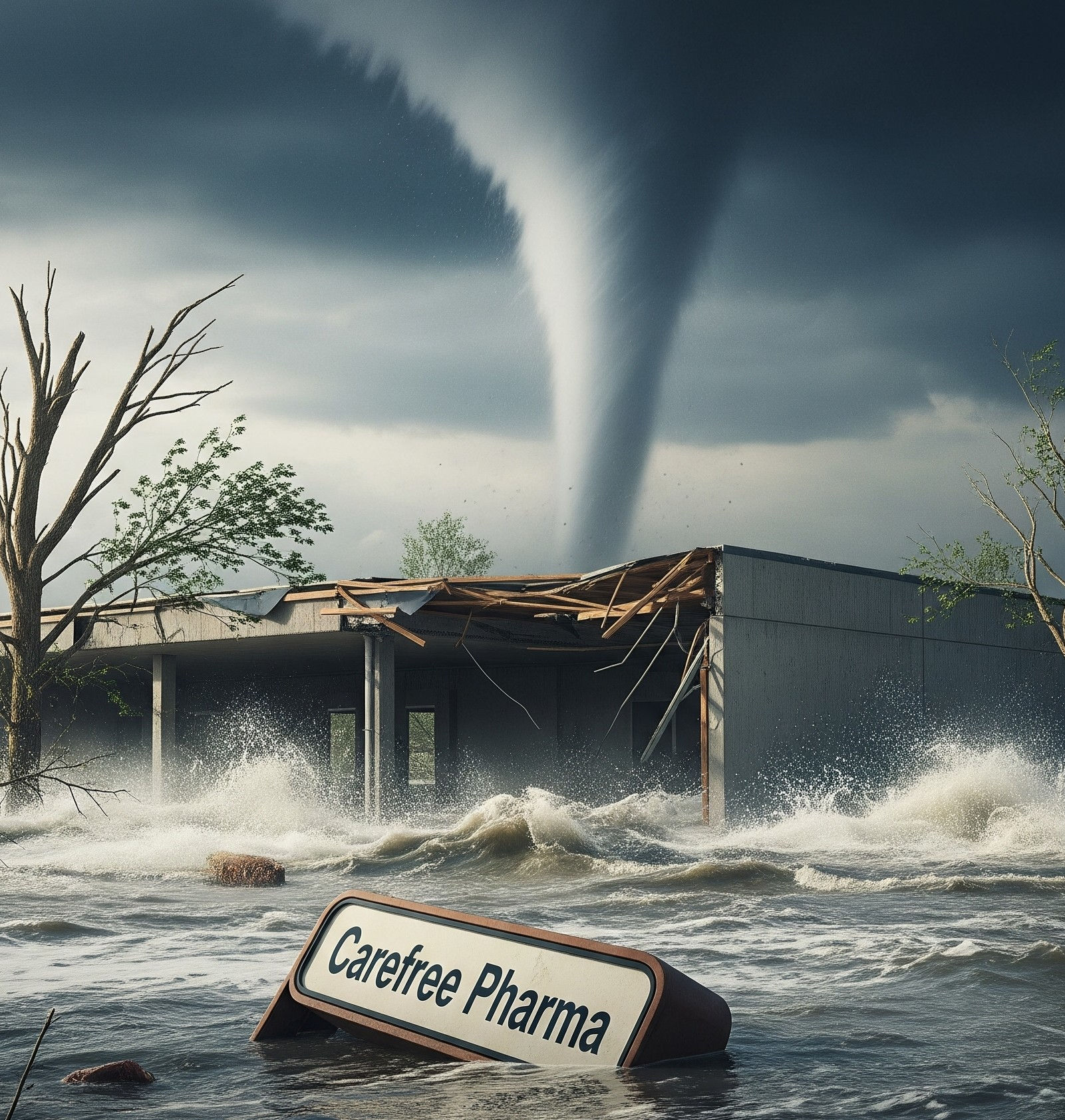Overview
The 2022 Pharmaceutical Stability Discussion Group Meeting/KENX Laboratory University wrapped up on June 22 with participants in Philadelphia as well as virtually around the globe. The topics addressed included what’s new in the Stability world as well as subjects that deserve our attention for continuous improvement. This edition of the StabilityHub Newsletter summarizes ten of those topics and some key learnings that we might employ in our roles as Stability Stakeholders. With this information at our fingertips, are we ready to take action and improve our compliance and performance records?
Laboratory GMPs, A System of Voluntary Compliance – Gayle S. Lawson
The FDA speaker emphasized that there are expectations of voluntary compliance to regulations and standards. Building a climate of trust and reliability goes a long way in establishing the respect and confidence of regulatory agencies. She outlined the 5 step pathway below, taking organizations from pain, to progress, to provision for permanent success.
- Problems occur.
- Problems are costly.
- Problems should be probed. Learning from investigations helps to understand how the problem occurred. If not, then you previously missed the opportunity to prevent the problem from occurring presently.
- Problems are fixed, safety nets are added.
- Problems are memorialized so they don’t happen again.
Are we ready to thoroughly investigate problems, set up safety nets to prevent hard landings, and change the game to prevent similar plays from going against us? Citation metrics are not favorable, so there is work to be done.
Stability Deviations and Out of Trend/Out of Specification – Gary Ritchie
Out of Specifications, Trend and Expectation results are part of everyday stability operations. Long gone are the days when a haphazard response to these occurrences can survive a regulatory inspection. The presenter reviewed the tools and procedures needed for us to address each of the anomalies that come our way, whether they are mistakenly introduced or represent a mysterious development in the characteristics of our product, Every Stabilitarian needs to be prepared in addressing these events. Are your procedures, staff and resources aligned for the tasks at hand?
Conducting a Mock Audit, How to Prepare for and Handle FDA Inspections – Emily Dickinson
Preparing for an Audit or Inspection starts with Housekeeping 101.
Audits: are the evaluation and measurement of the performance of a facility, a piece of equipment, a building, or a process. The outcome of evaluation is compared against a set of expectations, standards, or guidelines.
Inspections: Are the observation of a facility, a piece of equipment, or a process and verification that certain standards, regulations, or guidelines are being met.
Common problem items to check include signing documents and making them effective without training, incomplete documentation, closing out investigations before completion, Incomplete or missing CAPAs, failing to thoroughly clean and organize work areas and failing to have a well-defined (and communicated) plan for audit inquiries. These are basic elements of GMP, yet frequently show up in audits. They are relatively easy to remediate, but quickly sink in priority in the face of hectic schedules, tight deadlines, and limited resources. We can use audits productively to reveal these sunken issues and refocus attention on their remediation before an inspection dredges them up and attaches regulatory citations to them.
Stability Mapping – Walter Routh
Following SOPs to trace the pathway through the Stability Function is like taking directions from a roadside pedestrian instead of using a Google Map. There is great value in mapping your function with every intersection, overpass, and all stop lights noted; as dependencies, requirements and communications with stakeholders are key to the success of your program. A detailed, thoughtful approach is key in creating this critical strategic tool.
Stability Financials: Predicting the Future -Walter Routh
We’re all asked for them, and all too often we don’t have a great basis for an accurate determination of the cost of a Stability Study. When does the cost kick in? Is Chamber depreciation included? Are there factors reducing the cost? So many points to ponder. This presentation gave a very practical approach in getting to the answers through assigning value to critical steps. As Stabilitarians, we can surge forward to be proactive in this arena instead of trailing reactively behind allocations made without our input.
Applying Stability Statistics, Defining the Research Question, Finding the Answer(s) & Getting to the Point – Laura Pack & Lori McCaig
Statistics is a science. We need to use correct terms, define research objectives, apply appropriate tools, communicate findings, and make sound decisions based on sound statistical methods. How often do we sit down with our statisticians and outline what we are looking to demonstrate with our stability studies, what types of reports we’ll need and who is in the audience that will act upon our reports? Key aspects include: What’s the research question? Which data will be submitted for analysis? and Which statistical technique will be employed? Many of us miss the opportunities to excel through good working relationships with our statisticians.
Stability Metrics, Calendars, Clocks & Scoreboards – John O’Neill
Very few official Stability deadlines can be found in regulations and guidances but evolve as industry best practices and end up as regulatory expectations, often turning up in FDA 483 citations (such as 30 days to complete testing for a Stability Pull point). A current working knowledge of industry standards and metrics is needed to stay ahead in the compliance arena and the best way to keep up on these is to participate in discussion forums and seminars and monitor compliance citations such as 483’s and Warning Letters.
Developing a “Stability Budget,” Manufacturing and Shipping Challenges to Stability – Lori McCaig & Laura Pack
The Stability Budget is a useful concept to move beyond the retest period/shelf life at recommended storage conditions (RSC) and encompass all times and exposures in the “real world” while ensuring the product quality for the patient remains intact. Other oft-used terms and related concepts:
- Time out of temperature (TOT)
- Time out of storage (TOS)
- Allowable excursions,
- End to End Assessment
There are four situations for consideration in your Stability Budget:
- Product Storage
- Manufacturing and Distribution Operations (road, sea, and/or air)
- Unit operation or process may be performed or include temperature other than the RSC
- Product may be moved from one storage condition to another (temperature control may or may not be present)
- Allowable TOT may be under several specified conditions
- Product Use
- In the hands of the end user, who can be a health professional or the patient
- Time allowed outside RSC (also known as “patient convenience time”)
- May also include reconstitution, dilution, etc
- Excursions
- Temperature goes outside the recommended range for that segment (example: During controlled temperature storage, distributions)
NOTE: 3 out of 4 of the above contain operating norms, allowable times outside of RSC.
It behooves us to partner with our statisticians to develop solidly justified Stability Budgets for each of our products before we find ourselves partnered with regulatory reviewers and inspectors on the same topic.
Telling the Stability Story – Lori McCaig
Stability Stakeholders are the customers that rely on Stability Reporting. What purpose might your stability assessment and reporting serve? We go to a lot of trouble to produce data that tells a story about the product on which critical decisions will be made. Yet we often present the data but fail to tell the story. Data Tables, Stability Study Reports, Submission Dossier, Annual Product Quality Reviews require 4 distinct ways to tell a Stability story. There are tools and techniques that help with each. Knowing your audience, purpose and message are critical to successfully conveying the message you want to deliver. Take time to learn the elements of targeted Stability reports and partner with your colleagues in statistics, regulatory and quality control to tell your stability story in away that enables effective use of your data.
Regulatory Distinctions in Application and Validation of Bioanalytical Methods: It May Not Mean What You Think It Means -Nadine Ritter
Bioanalytical Methods are relatively young compared to traditional Analytical Methods and applying the appropriate governing regulations and guidances has proven problematic. There are a myriad of pathways to negotiate at each phase of development and careful evaluation of whether the Analytical focus is Good Laboratory Practices, Good Manufacturing Practices or Electronic Signatures/Records has a bearing on appropriate actions to be applied.
Purpose of GLP: To assure a GOOD STUDY has been conducted
Purpose of GMP: To assure a GOOD PRODUCT has been produced
Legal Definitions of Bioanalytical vs Analytical Methods:
- GLP = Good Laboratory Practices (Title 21CFR Part 58)
- BIOANALYTICAL methods for chemical or biological products
- cGMP = Current Good Manufacturing Practices (Title 21CFR Parts 210 & 211; Parts 600 & 610)
- ANALYTICAL methods for chemical or biological products
- “Part 11”: Electronic Signatures, Electronic Records (Title 21 Part 11)
- BIOANALYTICAL and ANALYTICAL methods
In the arena of Bioanalytical methods, proceed with caution with a Subject Matter Expert at your side.
Conclusion
Those who attended the 2022 PSDG/KENX Event went home with a wealth of information. We hope that we can continuously raise the bar in our operations and that Stabilitarians everywhere will have the opportunity to access, share and implement the information vital to the success of their programs.
Share This Article with the Stability Community!
June 10, 2025
Disasters occur whether we plan for them or not, but planning ahead to mitigate their impact and recover from their damage can make a big [...]
June 2, 2025
So, you’ve gone through the process of formulating user requirements, chamber selection and purchase. With the equipment in place; how do we go from this [...]
April 26, 2025
It’s Stability Information Month and time to go a little further than regulations and processes and talk about people, namely the ones who comprise the [...]
Share your questions and experiences
A stabilitarian encounters new situations every day. StabilityHub’s discussion forums give Stabilitarians an opportunity to ask questions and offer solutions to specific scenarios. Join in the conversations with other Stabilitiarians and share your knowledge!
A stabilitarian encounters new situations every day. StabilityHub’s discussion forums give Stabilitarians an opportunity to ask questions and offer solutions to specific scenarios. Join in the conversations with other Stabilitiarians and share your knowledge!





